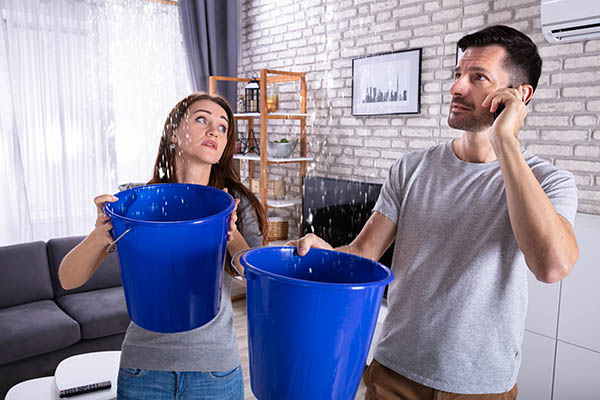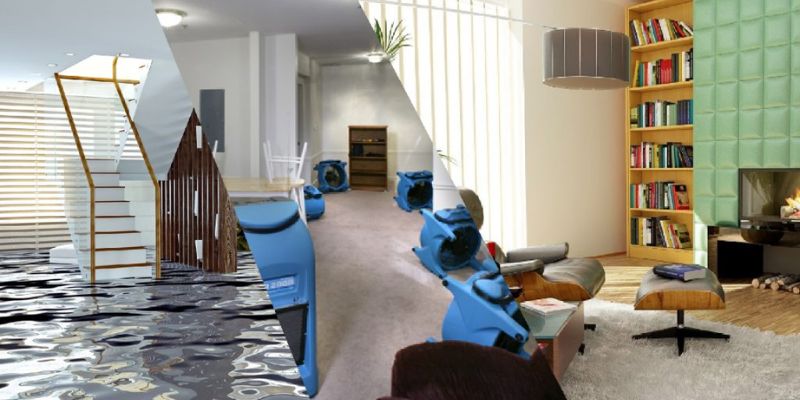Top Tips for Effective Water Damage Restoration: Secure Your Building Today
Water damage can strike unexpectedly, creating considerable disruption and possible dangers. Effective remediation needs an organized technique to decrease further injury. From assessing the damage to implementing safety nets, each step plays an important function in safeguarding residential property. Recognizing these approaches can make all the difference in the results of a water-related situation. What important actions should be focused on to ensure comprehensive defense?

Assess the Damage Instantly
When a water damage event occurs, it is important to evaluate the damage right away to mitigate additional issues (Emergency Water Removal). This initial assessment aids determine the extent of the damage and identifies influenced locations. Water can seep into walls, floorings, and furniture, bring about mold growth and architectural instability otherwise addressed immediately. A complete assessment should consist of inspecting for discoloration, dampness, and mildewy smells, which show dampness visibility. It is additionally important to record the damage through photographs and notes for insurance functions. Involving experts for an extra in-depth evaluation may be essential, specifically when handling substantial or concealed damage. Early recognition and exact analysis lay the foundation for efficient remediation and protect the home from extra difficulties
Shut down the Supply Of Water
Turning off the water system is an important step in preventing further damage during a water-related case. When a leak or flood happens, prompt activity is vital to reduce the level of the damage. Locating the primary water shut-off shutoff must be a concern. This shutoff is typically situated near the water meter or where the water line gets in the property. When situated, turning the shutoff clockwise will certainly quit the flow of water. In cases where the primary shutoff is inaccessible, individual shut-off shutoffs for appliances might additionally be made use of. Promptly shutting down the water supply not just protects the building from additional damage yet likewise promotes the subsequent restoration procedure, guaranteeing that healing initiatives can start immediately.
Get Rid Of Excess Water Immediately
Getting rid of excess water promptly is necessary for lessening damage and stopping mold and mildew growth in impacted areas. The longer water continues to be in contact with materials such as drywall, insulation, and wood, the better the risk of architectural damage and the growth of mold. Home owners ought to act quickly to examine the scenario and utilize ideal tools, such as wet vacuum cleaners or pumps, to draw out standing water successfully. If the volume of water is significant, getting in touch with expert remediation solutions may be necessary, as they can provide specific equipment and competence. Furthermore, eliminating furnishings and valuables from the afflicted area can help to decrease damage and promote the overall restoration process. Timely activity not only safeguards property yet likewise aids in a smoother recuperation trip.

Dry the Affected Location
After getting rid of excess water, it is vital to dry the afflicted area extensively. This entails removing any kind of standing water and boosting air flow to promote evaporation. Water Extraction And Drying. Reliable drying out will assist protect against mold and mildew growth and additional damage
Eliminate Standing Water
Quickly attending to standing water is essential for effective water damage remediation. The visibility of stationary water can result in further residential or commercial property damage and develop an atmosphere for mold and mildew growth. To reduce these risks, it is necessary to get rid of standing water as promptly as feasible. Flood Cleanup Services. This procedure generally entails making use of submersible pumps, damp vacuums, or specialized removal tools. Experts recommend examining the deepness and degree of the water before making a decision on the proper approach for removal. Safety and security safety measures need to additionally be taken, consisting of using safety gear and guaranteeing power is shut off in affected locations. Once the standing water is efficiently eliminated, the drying procedure can start, additionally securing the building from ongoing damage

Rise Air Circulation
Improving air circulation is vital for successfully drying locations impacted by water damage (Water Damage Restoration). This process aids to accelerate dissipation, reducing the risk of mold and mold growth. Professionals frequently suggest making use of followers to develop a steady airflow throughout the space. Putting box followers in home windows can attract in fresh air, while high-velocity followers can route airflow in the direction of moist surfaces. Furthermore, opening up doors and home windows enables for cross-ventilation, improving the drying out process. Dehumidifiers can likewise be utilized to remove excess moisture from the air, further aiding in drying out. By making certain that air circulates openly, homeowner can significantly minimize the lasting results of water damage and safeguard the honesty of their framework
Evaluate for Mold Development
Mold development is a severe problem adhering to water damage, as it can bring about wellness concerns and structural wear and tear. After any kind of flooding or leaks, it is important to carry out a thorough assessment of the influenced locations. This consists of monitoring concealed spaces such as behind walls, under rugs, and in cellars or attic rooms where moisture may remain. Signs of mold consist of a moldy smell, discoloration on surfaces, or noticeable growth. Homeowner need to utilize protective equipment when examining, as mold spores can posture health dangers. If mold is spotted, it is important to address it instantly, as delaying removal can exacerbate the issue and boost the threat of significant health issues for occupants. Early intervention is key to reliable mold and mildew administration.
Fixing and Restore Broken Structures
When dealing with water damage, it is necessary to first evaluate the structural integrity of the affected areas. This assessment helps recognize prospective risks and educates the required fixing approaches. Involving specialist restoration solutions ensures that the reconstruction procedure is performed safely and successfully.
Evaluate Structural Stability First
Before initiating any type of water damage reconstruction, it is essential to examine the architectural stability of the affected location. This examination aids identify any type of jeopardized elements, such as foundations, wall surfaces, or beams, which may position safety dangers. Inspecting for indications of warping, cracking, or mold and mildew growth is critical, as these indications can reveal underlying damage that needs immediate attention. Furthermore, understanding the degree of the damage can guide reconstruction initiatives and identify whether repair services are feasible or if substitute is required. It is important to document searchings for completely, as this details can be useful for insurance cases or future reference. Prioritizing structural evaluation warranties that restoration efforts proceed safely and successfully, eventually protecting the residential or commercial property and its residents.
Use Expert Restoration Services
Using specialist remediation solutions is important for properly fixing and restoring broken structures after water incidents. These specialists possess the necessary training, tools, and experience to analyze and minimize water damage completely. They can identify concealed issues, such as mold and mildew growth and structural weak points, that might not be instantly apparent. Professional services likewise utilize advanced drying out techniques and devices, making certain that all moisture is removed to stop more damage. Additionally, they stick to market standards and laws, making sure that the reconstruction procedure is reliable and risk-free. By engaging restoration specialists, homeowner can accelerate recovery, reduce long-term damage, and eventually secure their financial investment. This proactive strategy is vital in maintaining the integrity and safety of damaged frameworks.
Prevent Future Water Damage
To successfully prevent future water damage, homeowners need to adopt an aggressive technique to maintenance and repairs (Water Damage Restoration). Routine assessment of seamless gutters, downspouts, and roofing systems is essential; clogged up gutters can result in water overflow and roof leakages. In addition, examining for leakages in pipes components and home appliances can ward off prospective damage. House owners should additionally think about setting up sump pumps in cellars or low-lying locations to take care of water build-up. Sealing splits in structures and making certain appropriate drainage around the home are crucial actions in safeguarding versus water invasion. Preserving humidity degrees with dehumidifiers can site web protect against mold development. By implementing these safety nets, homeowners can substantially decrease the danger of water damage and safeguard their home for the long term
When a water damage occasion takes place, it is crucial to analyze the damage quickly to reduce additional concerns. Eliminating excess water without delay is crucial for minimizing damage and preventing mold development in influenced areas. Quickly dealing with standing water is important for reliable water damage restoration. The visibility of stationary water can lead to further building damage and create an atmosphere conducive to mold and mildew growth. Prior to initiating any type of water damage reconstruction, it is essential to assess the architectural stability of the damaged area.